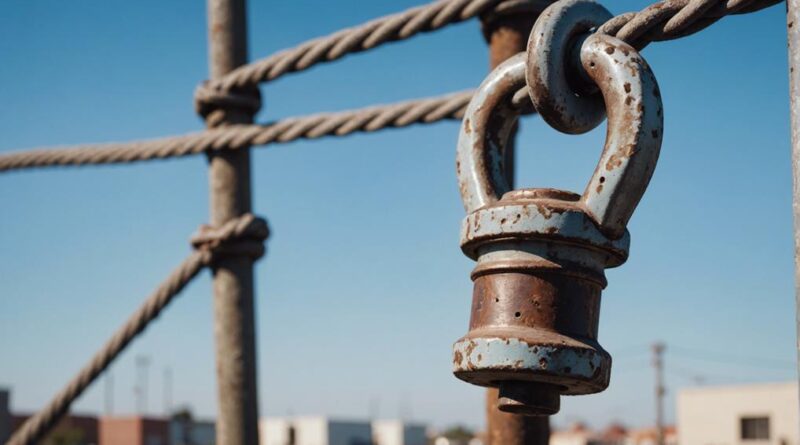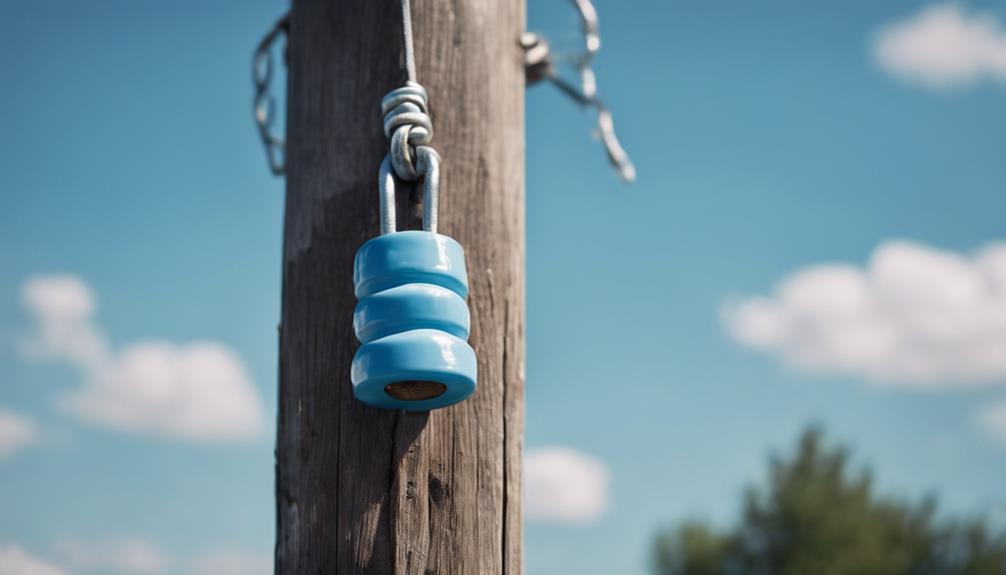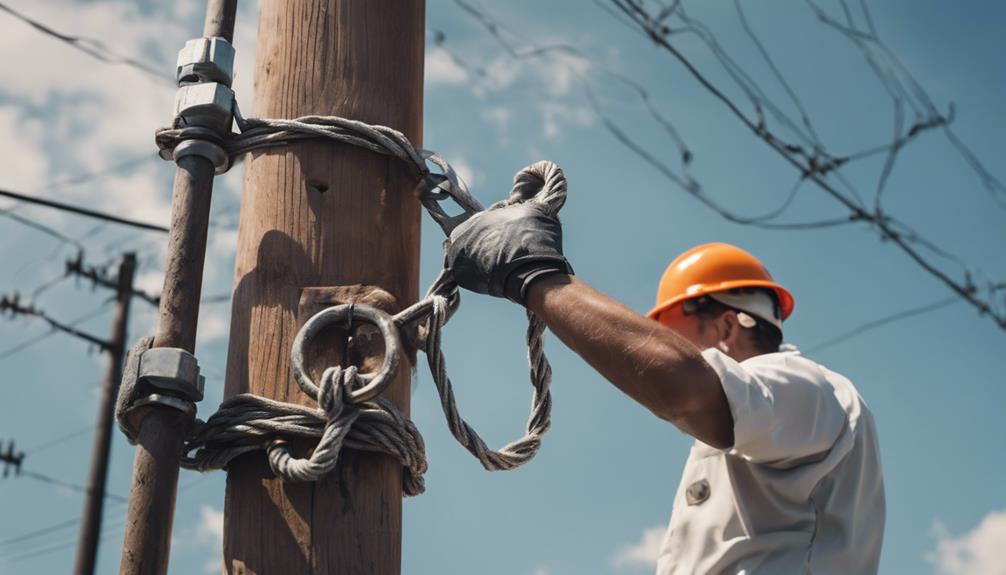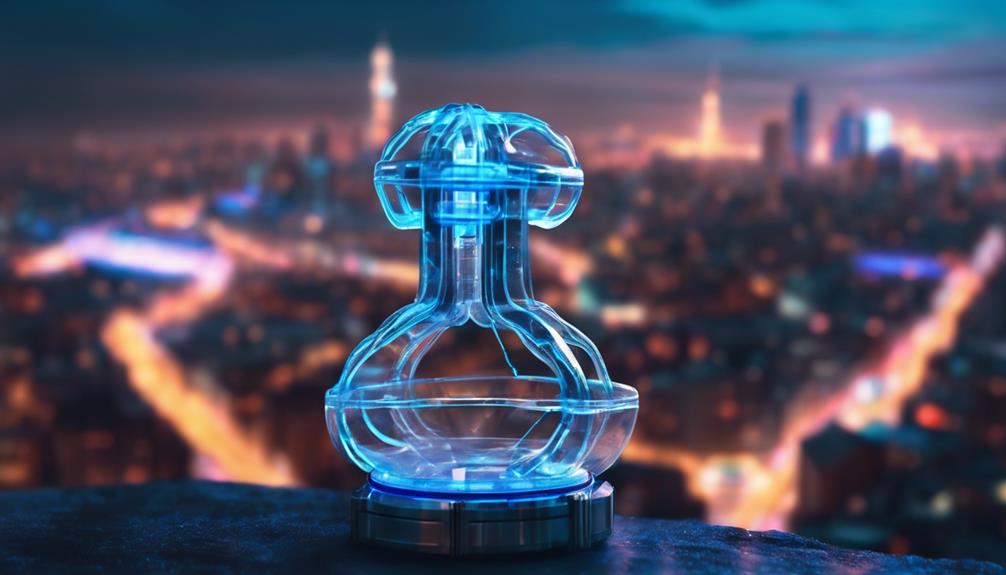
You've probably seen shackle insulators enthroned on electricity poles, their distinctive U-shaped design quietly ensures the safety and efficiency of electrical distribution systems . These insulators are made from robust materials such as ceramics or composites and are essential for mechanical and electrical stress on overhead lines. Given their role in supporting wire connections and resisting electrical currents, it is important to understand how their quality and installation affect the overall reliability of power systems. As you explore the nuances of these components, you will discover why routine maintenance is not only recommended, but essential for preventing catastrophic power distribution failures . Curious about what happens when these insulators fail?
The central theses
- Shackle insulators support power poles and towers and resist mechanical stress and environmental influences.
- They are typically made from high-quality ceramic or composite materials and offer excellent electrical resistance and durability.
- The design of the shackle insulators includes a curved shape to distribute the load evenly, improving their lifespan and performance.
- During installation, the isolator must be inspected for defects, positioned correctly, and proper fasteners must be used to ensure safe and proper alignment.
- Regular maintenance, including biannual inspections and cleaning, ensures efficiency and reliability in electrical distribution networks.
Understanding Shackle Insulators

Shackle insulators, essential components in electrical systems ensure safety by preventing the passage of unwanted electrical currents . As you look at her design variants you will notice how they adjusted over time to meet specific needs. Shackle insulators were simple designs were mainly used on telegraph lines in the 19th century. They were typically made of glass or ceramic, chosen for their ability to withstand environmental stresses while insulating. electrical conductors .
Over the years, the development of shackle insulators has been marked by significant design changes, driven by increasing demands on electrical distribution systems. Each variant has a unique function, from simple U-shaped models to more complex designs. Modern shackle insulators, for example, have features that improve their performance in high voltage applications and harsh weather conditions.
These developments in shackle insulators have not only improved their efficiency and expanded their uses. From rural telegraph poles to urban electrical grids, changes in their designs reflect a history of technological adaptation and improvement. Understanding this historical development will help you better appreciate the importance of these components in maintaining the safety and reliability of modern electrical infrastructures.
Important components and materials
The main elements of shackle insulators include their materials and structural components that are crucial to their functionality and durability. When choosing a shackle insulator, it is important to consider the durability of the material and that Component design. These insulators typically consist of high-quality ceramic or composite materials . Ceramic, known for its excellent electrical resistance and mechanical solidity ensures that the insulator can withstand environmental stress. Composites, on the other hand, offer robustness against contamination and moisture, making them ideal for harsh weather conditions.
The design of shackle insulator components also plays a crucial role. Construction includes the shape and manner in which various components are connected together. The arched shape of most ceramic shackle insulators helps evenly distribute mechanical stress, prolonging their service life. Connectors and metal parts are typically designed to resist corrosion and secure fittings .
You will find that each material and design choice affects the overall performance of the insulator. For example, the porcelain used in some shackle insulators is not only durable, but also has a smooth enamel that minimizes dirt buildup and reduces the need for maintenance. By understanding these aspects, you will be better able to choose an insulator that meets your needs.
Installation techniques

After selecting the correct shackle insulator based on material and design, it is important to focus on effective installation techniques to ensure optimal performance. You will need to overcome several assembly challenges and ensure you have the proper installation tools to properly secure the insulators.
Here are some important steps you should follow:
- Preparation : Gather all necessary tools in advance, including torque wrenches, screwdrivers, and safety equipment.
- Inspection : Before installation, check each insulator for defects or damage to prevent future failure.
- Positioning : Carefully place the isolator so that it is aligned with the mounting holes. Misalignment can cause stress and eventual breakage.
- Backup : Use appropriate fasteners and tighten to manufacturer's recommended specifications to ensure a tight fit.
- Last check : After installation, recheck all connections and accessories. A loose insulator can lead to operational risks and inefficiencies.
Typical applications
Shackle insulators support diverse applications including utility poles and electricity poles where they effectively manage mechanical loads and environmental pollution. They are also an integral part of maintaining the reliability of electrical distribution networks and thus ensure a smooth and efficient power supply.
History, Shackle insulators have played an important role since the beginning of electrical engineering. They have adapted to changing technology and demands and were originally used to attach crossarms to utility poles and control line deviations. Their versatility means they can be used horizontally or vertically, making them suitable for urban and rural environments.
The environmental impact of these insulators is also notable. They mainly consist of high quality porcelain or ceramics and are designed for unfavorable weather conditions such as heavy rain, extreme temperatures and UV radiation without losing quality. This durability reduces and minimizes the need for frequent replacements. Ecological footprint related to the production and disposal of insulating materials.
Whether for high voltage power lines or simple rural electrification projects, shackle insulators are a reliable solution that engineers have trusted for generations. Its application ensures that electrical systems function effectively even under difficult environmental conditions and is therefore an integral part of electrical infrastructure worldwide.
Maintenance and security

Although shackle insulators are tough, proper maintenance ensures they continue to function safely and efficiently. Regular maintenance not only increases their lifespan but also ensures that they function optimally in different environmental conditions. You must consider inspection frequency and the impact of weather on these components.
Here are some things to keep in mind for effective maintenance and security:
- Regular inspections: Schedule inspections at least twice a year. In areas with extreme weather conditions, more frequent inspections may be required.
- Cleaning Procedure: Regularly remove dirt, debris and other contaminants to prevent possible performance degradation.
- Meteorological considerations: Assess and mitigate the effects of weather; pay attention to damage caused by UV radiation, humidity and temperature fluctuations.
- Immediate Repairs: Address any signs of wear or damage immediately to prevent further deterioration or potential safety hazards.
- Documentation and records: Maintain detailed records of all inspections, maintenance activities and repairs. This helps monitor isolator performance and plan future maintenance.
Performance Benefits
Well maintained Shackle Insulators Improve your system's efficiency and reliability with guaranteed Superior performance under different conditions. Its unique design minimizes energy loss and makes your system energy efficient . You'll notice less electricity consumption, which will directly translate into lower electricity bills. This efficiency also means that the environmental impact is significantly lower because less energy is needed to be generated. Reducing emissions from power plants.
Further and Beyond Robust nature of shackle insulators means they can withstand environmental stresses better than many alternatives. This durability reduces the frequency of necessary replacement and maintenance checks, providing cost savings and a more consistent, reliable power supply . You don't have to worry about unexpected power outages due to insulator failure, a common problem with less robust options.
Further and Beyond Improved Design Modern shackle insulators help evenly distribute mechanical load. This distribution ensures less wear on individual parts and improves their service life and performance. You are investing in a solution that will save money in the short term and become a sustainable future by minimizing environmental impact and resource depletion.
Future trends in insulator technology

Based on the robust advantages of modern shackle insulators, we want to explore new technologies that will revolutionize insulator technology. As you look to the future, you will see innovation focused on improving performance, prioritizing environmental sustainability and incorporating smart monitoring systems.
What awaits you:
- Nanotechnology Coatings : These advanced materials significantly improve the durability and efficiency of insulators, reducing maintenance needs and extending their lifespan.
- Biodegradable materials : Researchers are developing insulators made from environmentally friendly materials that minimize ecological impact without compromising the integrity of the insulation.
- Built-in smart sensors : These sensors provide real-time monitoring of insulator performance and health, alerting you to potential issues before they lead to failure.
- Energy production technologies : Future insulators could capture ambient energy (such as solar or vibrational energy), transforming maintenance-free insulators into additional energy sources.
- 3D printing of insulators : Individual, needs-based production of insulators using 3D printing technology allows for rapid deployment and precise adaptation to specific environmental conditions.
These innovations not only aim to keep up with technology, but also to establish new standards of efficiency and sustainability. You are entering an era where your insulators do more than just insulate – they intelligently integrate with the broader grid infrastructure, promoting a sustainable and efficient energy system.
Conclusion
As you have seen, shackle insulators are essential for keeping electrical systems safe and efficient. To maximize your benefits, choose the right materials and follow proper installation techniques .
Regular maintenance cannot be neglected – it is crucial to ensure its longevity and performance. Stay up to date with the latest advances in Isolator Technology to keep your systems up to date and running smoothly.
Remember the reliability of your energy grid depends a lot on these robust components.
Common questions
What are shackle insulators made of?
Shackle insulators are commonly made from high-quality ceramic or composite materials. Ceramics offer excellent electrical resistance and mechanical strength, while composites are resistant to contamination and moisture.
How often should shackle insulators be checked?
Shackle insulators must be inspected at least twice a year. In areas with extreme weather conditions, more frequent inspections are required. Regular inspections help to detect damage or wear at an early stage and repair it in a timely manner.
What are the benefits of properly maintaining shackle insulators?
Proper maintenance ensures optimal performance and longevity of shackle insulators. Regular cleaning and inspection minimize performance degradation, improve energy efficiency and prevent unexpected failures.

